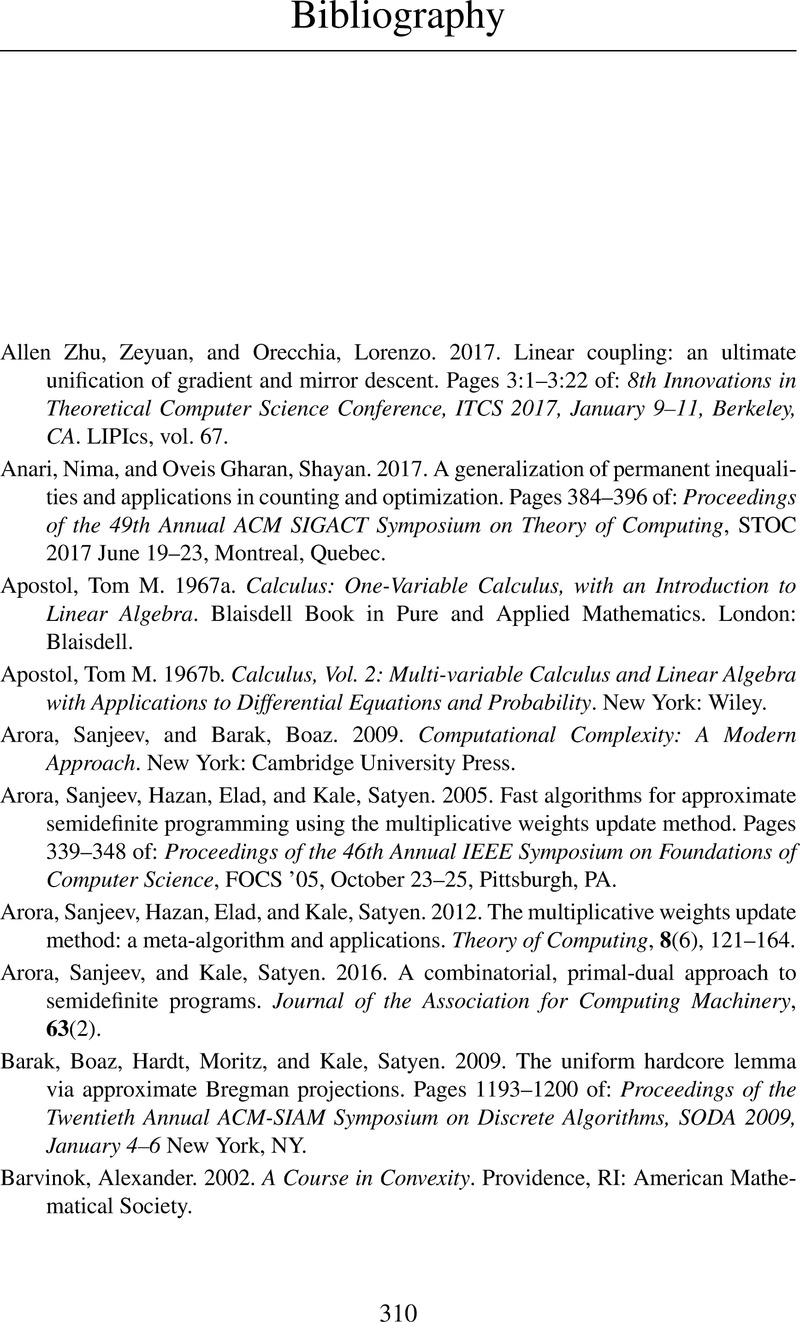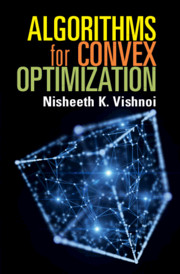Book contents
- Frontmatter
- Dedication
- Contents
- Preface
- Acknowledgments
- Notation
- 1 Bridging Continuous and Discrete Optimization
- 2 Preliminaries
- 3 Convexity
- 4 Convex Optimization and Efficiency
- 5 Duality and Optimality
- 6 Gradient Descent
- 7 Mirror Descent and the MultiplicativeWeights Update
- 8 Accelerated Gradient Descent
- 9 Newton’s Method
- 10 An Interior Point Method for Linear Programming
- 11 Variants of Interior Point Method and Self-Concordance
- 12 Ellipsoid Method for Linear Programming
- 13 Ellipsoid Method for Convex Optimization
- Bibliography
- Index
- References
Bibliography
Published online by Cambridge University Press: 24 September 2021
- Frontmatter
- Dedication
- Contents
- Preface
- Acknowledgments
- Notation
- 1 Bridging Continuous and Discrete Optimization
- 2 Preliminaries
- 3 Convexity
- 4 Convex Optimization and Efficiency
- 5 Duality and Optimality
- 6 Gradient Descent
- 7 Mirror Descent and the MultiplicativeWeights Update
- 8 Accelerated Gradient Descent
- 9 Newton’s Method
- 10 An Interior Point Method for Linear Programming
- 11 Variants of Interior Point Method and Self-Concordance
- 12 Ellipsoid Method for Linear Programming
- 13 Ellipsoid Method for Convex Optimization
- Bibliography
- Index
- References
Summary

Information
- Type
- Chapter
- Information
- Algorithms for Convex Optimization , pp. 310 - 318Publisher: Cambridge University PressPrint publication year: 2021
